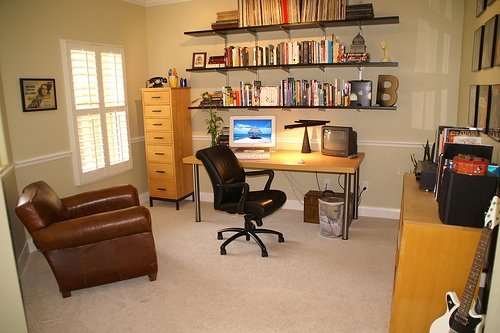How Web Designers Can Effectively Communicate With Their Clients

Working from home brings numerous advantages and if you are freelancing web designer, you can decide which projects to take and work from the comfort of your own home. However, many independent web designers and developers do not realize the importance of communication successfully with their clients. Web design and development is business like any other and prompt and efficient communication is just as important as great designing and developing skills. Here are a few tips, which could help you keep that two-way communication channel open and your customers happy:
Build Solid Relationships
 Even prior to taking on a project, make sure that you know what your clients’ needs and expectations are. This is the time to ask questions, learn more about your new client, their organization and goals, and lay the foundation of a good relationship.
Even prior to taking on a project, make sure that you know what your clients’ needs and expectations are. This is the time to ask questions, learn more about your new client, their organization and goals, and lay the foundation of a good relationship.
Listen Without Interrupting
You should realize than not all and perhaps most of your client will not be as design or computer savvy as you are, and they would have to explain what they expect form you in non-technical language. Take the time to listen to them, take notes, and interrupt only to clarify a point or ask relative questions.
Be Available
Many web designers work better by shutting all distractions off and if you are one of them, then make sure that you give your customers at least one option of reaching you quickly. In the case of an emergency, perceived or real, your customers would be satisfied only if you reply to them promptly. For instance, if you wish to turn your telephone off while working, then leave an instant messenger or email, where you can be contacted.
Be Organized
 If you are dealing with only a handful of customers, then you could probably take all telephone calls and emails as they come. However, when your business starts to grow, it is better to have a solid system in place – you can have your clients’ project details in separate files, create a different folder in your email for the different clients, and keep good track of your communications. This will help you remember what was said and agreed on and when you are supposed to call your clients and update them on your progress.
If you are dealing with only a handful of customers, then you could probably take all telephone calls and emails as they come. However, when your business starts to grow, it is better to have a solid system in place – you can have your clients’ project details in separate files, create a different folder in your email for the different clients, and keep good track of your communications. This will help you remember what was said and agreed on and when you are supposed to call your clients and update them on your progress.
Be Patient
You are likely to be dealing with clients from all backgrounds, some of whom will have little design or web development knowledge. It is important to be patient when explaining your vision for the project and to make sure that your client understands what needs to be done.
Avoid Lingo
Avoid using technical terms unless you are absolutely certain that your client is familiar with them. If you have to use jargon, then at least take the time to explain to your clients what the different terms mean and how they fit in the whole project.
Use a Project Questionnaire
 This is an excellent way to learn more about your client, the project, and their preferred method of communication. In addition, you will have your client’s directions in writing and you can always refer to them at a later stage.
This is an excellent way to learn more about your client, the project, and their preferred method of communication. In addition, you will have your client’s directions in writing and you can always refer to them at a later stage.
Have a Single Point of Contact
When dealing with large organizations and projects, you might have to stay in touch with more than one person, who in turn, might have to report to their superiors. This could easily cause delays and lead to frustration. It is best to know from the very beginning who from your client’s organization is in charge of the project and who will be communicating with you. Speaking to one person only could help you speed up matters and avoid misunderstandings and delays.
Have Face to Face Meetings
When working on smaller projects, a single phone call might be all that is needed. However, when working on large and complicated projects, you might want to arrange one or more face-to-face meetings and update your client on the project’s progress in person.
Provide Regular Updates
 You should update your clients regularly and inform them on the tasks that you have completed, the tasks that you have planned, and the money spent. This will help your client spot any slippages and it will help you stay disciplined as well.
You should update your clients regularly and inform them on the tasks that you have completed, the tasks that you have planned, and the money spent. This will help your client spot any slippages and it will help you stay disciplined as well.
It is not enough just to communicate, you have to do it right. Utilizing these tips will put you well on your way to building a great relationship with your clients with solid communication.

